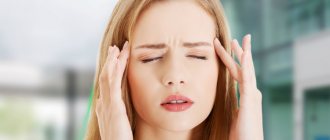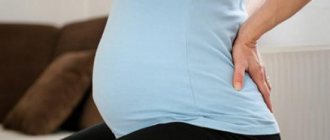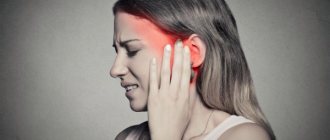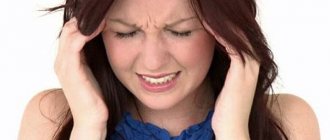14%* of the world's population suffer from migraine attacks, with an average duration of 18 hours. 68%* of migraine sufferers are people between 35 and 45 years old. Among them there are three times more women than men. These figures were announced by practicing neuropathologist and candidate of medical sciences Aigul Kudaibergenova at an event dedicated to the launch of the Migraine Control application in Kazakhstan.
“No one can say exactly why I have a headache.”
Our heroine Bota Suleimenova had her first migraine attack four years ago. Now it is part of her life: migraine can remind itself once a month or several times a week. It interferes with work and life.
Bota Suleimenov:
– The first attack happened in the winter of 2015, when I flew to Almaty on vacation. It was an overnight flight, and once I was home, I immediately fell asleep. When I woke up, I still had a headache. I thought it was due to jet lag. Painkillers did not help, the pain did not stop for 2-3 days: I could not get up, I felt nauseous, it was painful to open my eyes. Then I was diagnosed with migraine.
I had a concussion as a child, and at the age of 10-11 I started having constant headaches. Then they diagnosed intracranial pressure, so throughout my conscious life these pains seemed to be something normal. It didn’t really interfere with everyday life, but when I was in my first year of university, there was probably a period of exacerbation. I was again sent for an MRI and examination, which again only confirmed intracranial pressure.
According to some doctors, the migraine arose as a consequence of intracranial pressure, but no one can say for sure what exactly is causing my headache. Maybe because of intracranial pressure or migraines, or because of both.
Causes of severe headaches
Most often, severe pain in the head indicates problems with blood vessels, which:
- shrink too much. The main reasons for excessive compression of blood vessels are oxygen starvation, lack of nutrients (they haven’t eaten or drunk for a long time), weak venous tone;
- expand too much. A disease in which blood vessels regularly dilate excessively is called migraine. This type of neurological disorder affects about 10% of the population.
When looking for a doctor who treats headaches, go to the neuropathology department. In most cases, it is the neurologist who makes the diagnosis and prescribes a treatment regimen. If you have pain in the maxillary sinuses, nose, or ears, make an appointment with an otolaryngologist. Sinusitis, sinusitis, otitis, and other diseases of the ENT organs can also provoke pain throughout the head.
Figure 2 - Migraines can be triggered by a trigger such as a smell or taste.
Features of migraine:
- severe pain is localized in the same part of the head each time;
- before an attack, changes in taste, color, smell, and hallucinations appear (the so-called aura);
- during an attack, a person completely loses working capacity for 2–72 hours;
- pain – throbbing;
- intolerance to sounds, photophobia;
- vomiting, nausea, neurological disorders;
- the presence of a triggering factor (for example, a migraine attack can be triggered by the smell of bananas or the meowing of a cat).
Understanding whether you have a migraine or not is very simple. With migraines, the attacks are clearly expressed, and between them the head does not hurt at all. If your head aches constantly, then it is not a migraine.
Researchers claim that in 90% of cases, painful sensations develop due to overstrain of the muscles of the neck, eyes, face, forehead, and various parts of the head. Pain due to muscle strain and migraine are called primary. You can get rid of them by acting directly on the cause of their occurrence (for example, by performing a neck massage, doing eye exercises, drinking an antispasmodic). The localization of sensations is different. Sometimes it is a girdling headache, in other cases the whole head, or part of it (the back of the head, temples) hurts.
The safest drugs for headaches are Ibuprofen and Paracetamol.
Secondary headaches develop due to pathological processes occurring in the neck or head. They are caused, for example, by osteochondrosis, vegetative-vascular dystonia, and hypertension. Pain can be localized with painkillers. The underlying disease needs to be treated, then the headache will go away on its own.
A severe headache that pills do not help get rid of is a serious reason to visit a doctor. This condition is among the signs of stroke, neurological disorders and requires emergency medical care.
Figure 3 - Severe pain in the head is sometimes provoked by diseases of the ENT organs.
Sometimes very severe headaches develop after taking high-dose headache medications. Such painful sensations are called abuse. Therefore, the principle “the more the better” does not work here.
Sudden severe headache is a sign of a stroke or cranial neuralgia. For patients with diabetes, kidney failure and cancer, this is a signal of the development of metabolic imbalance.
Figure 4 - Severe headache may be a sign of stress or stroke
Painful sensations in the head area can be a side effect when taking medications. If this is the case, coordinate further actions with your doctor.
And painful sensations await people during a hangover. Here's what to do if you have a terrible headache:
- 6 hours after the last drink, take Aspirin (can be replaced with Picamilon, Mexidol, Pantogam);
- take a contrast shower;
- drink a lot of water (this will not be difficult) and any diuretic (Diacarb, Triamten, Veroshpiron). Strong diuretics (for example, Lasix, Furosemide, Hypothiazide, Oxodoline) do not need to be used.
Citramon P or Paracetamol should not be taken. They will overload the liver, which at this moment is already working “at high speed.”
No one knows for sure what causes migraines
Migraine is a chronic disease, the main symptom of which is an attack of throbbing headache. Sometimes migraines are accompanied by nausea, sensitivity to light and sounds: ordinary sounds and soft light intensify the already excruciating pain.
Neurological disorders can also indicate a migraine: dizziness, temporary blurred vision, lethargy. At the same time, migraine is associated with external factors - nutrition, routine, stress level.
The causes of migraines are not visible on MRI, and pain is a very subjective indicator that is extremely difficult to measure. During the intervals between attacks, the person looks quite healthy, which supports the spread of the myth that the disease is illusory.
What should pregnant women drink for headaches?
As you know, pregnant women cannot do everything - endure painful sensations and take medications against them. However, a way out can be found. Typically, headaches are provoked by changes in hormonal balance and an unusual increase in blood volume for the body. If the expectant mother quickly gains weight, problems are added. Those who know exactly why their headaches hurt can take No-shpa, Paracetamol, Citramon. If the sensations appear for the first time or seem suspicious, immediately go for an examination to a specialist.
Pregnant women are contraindicated:
- tryptamine-based medications – Amigrenin, Antimigraine;
- Nurofen, Aspirin, Propranolol, Ergotamine. These drugs can provoke bleeding, premature birth, and disrupt fetal development.
Figure 7 - What to drink “from the head” for pregnant women, the doctor will advise.
The headache is frequent and severe, but it is too early to diagnose migraine
There are many types of headaches, but globally they can be divided into primary and secondary. Secondary pain occurs as a consequence of some abnormality. Migraine is a primary one – its occurrence does not necessarily require any previous injuries or abnormalities.
Primary headache, as a rule, is not life-threatening, but greatly impairs its quality.
Migraines are often confused with tension headaches. Tension pain can arise from the characteristics of upbringing, psychological qualities of the individual, the level of stress or prolonged positional loads.
People describe the pain as pressing, mild to moderate, and often bilateral. It appears in the afternoon or after stress. If a tension headache lasts several days, it may be accompanied by photo- and phonophobia, as with migraine, but this is rare and is never accompanied by nausea or vomiting. At the same time, a person can move, eat, work, and physical activity does not increase the pain, and sometimes even alleviates it. With migraines, physical activity is extremely difficult.
Psychotherapy may be effective for tension headaches, but not for migraines.
First aid for headaches
What to do when a headache takes you by surprise and there are no suitable medications at hand? The first thing you need to do is to retire, lie down, darken the room, muffle the sounds, remove all irritating factors (especially if you feel a migraine attack approaching). Relaxing eye exercises will help relieve pain caused by vascular spasm. If there is spasm of blood vessels, you can take a warm shower; if they are overly dilated, you can take a cool shower. Going to the bath is dangerous - there is a high chance of feeling bad.
Figure 5 - When your head hurts badly, try to lie down
You should not take a contrast shower. Temperature changes cause blood vessels to alternately contract and expand. If the problem is caused by spasm or excessive dilation of blood vessels, this will inevitably increase the pain.
If possible, give a light head massage. Try not to overload your body on this day - do not overeat, eliminate alcohol and physical activity. In some cases, these measures help relieve an incipient attack or use “lighter” drugs. Smooth adjustment of the diet and light physical activity (regular walks in the fresh air are suitable) in the long term will help to avoid attacks or significantly reduce their pain.
Figure 6 - A heating pad with ice will help alleviate the condition during a migraine attack
“Medicines don’t always work quickly”
Bota Suleimenova: – I have had poor eyesight since childhood, so attacks often pass with an aura. An aura is a short-term visual disturbance that signals an upcoming attack.
Medicines do not always work quickly, so the best solution is to reduce the frequency of attacks. To do this, I try to exercise regularly and maintain a healthy regimen. With overall health improvement, the frequency of migraine attacks decreases.
Although often there is no need for a reason for an attack to occur. You can eat right and maintain a generally healthy body and brain, but seizures still appear. This makes it difficult to do business. I work for an international organization, we have additional sick leave, which does not need to be confirmed with papers. If I have sudden attacks, I can just rest at home.
Relatives try to be understanding, but the other person cannot help. Don't bother is already a help.
Migraine has a script with certain stages
1. Prodrome – the first phase. Symptoms of the prodromal phase include a wide range of phenomena: mood changes, irritability, depression or euphoria, fatigue, sensitivity to smells and sounds. This phase is observed in migraines with or without aura.
2. 30% of people then experience an aura that lasts no more than an hour, this is similar to visual hallucinations. And the longer a person looks at colored or flashing objects or drawings, the worse his condition is, so he tries to focus on a white wall or piece of paper.
Aura is a transient neurological phenomenon that occurs before or during a headache. Usually the aura develops gradually over several minutes and lasts no more than an hour. Symptoms may be visual, sensory, or motor, and many patients experience multiple symptoms simultaneously.
During the first two phases, you need to take a triptan rescue pill. This will not stop the pain, but it will significantly ease it and shorten the duration of the attack.
3. During the third phase, pain covers the entire head, nausea and vomiting, and severe fear of light and sound appear. Any movement increases the pain. This phase can last from several hours to several days.
4. Postdrome – the pain subsides, the person falls asleep. The next day the person feels tired, has poor hearing, and blurry vision. Abilities are reduced.
If a person has more than 10 migraine attacks per month, he practically does not live. Fortunately, these are few in number; every third person experiences one or less than one attack per month. But it happens that people do not know about the existence of pills that can help stop a migraine attack, because up to 50% of migraine sufferers still practice self-medication.
Migraine tries to force people to live in the middle ground
People with migraines are more susceptible to momentary factors called triggers, which increase the risk of headache attacks.
Among the most common triggers:
- Hormonal – menstruation, ovulation, use of oral contraceptives.
- Food – consumption of alcohol, glutamate, chocolate, cocoa, nuts, celery, cheese.
- Weather – Weather changes can affect the balance of chemicals in the brain and trigger seizures.
- Behavioral – lack of sleep or too much sleep, feeling hungry or overeating.
If you keep a diary of the occurrence of migraine attacks and the circumstances in which these attacks occurred, you can identify your individual characteristics. People who know their triggers and avoid them experience fewer seizures and significantly improve their quality of life. For convenience, you can keep a diary of migraine triggers in a mobile application. Such an application “Migraine Control” was recently announced by SANTO. Useful materials about migraines on the Internet can be found using the hashtag #SUMAMigraineReduces.
You can download the application using these links:
- for Android;
- for iOS.









